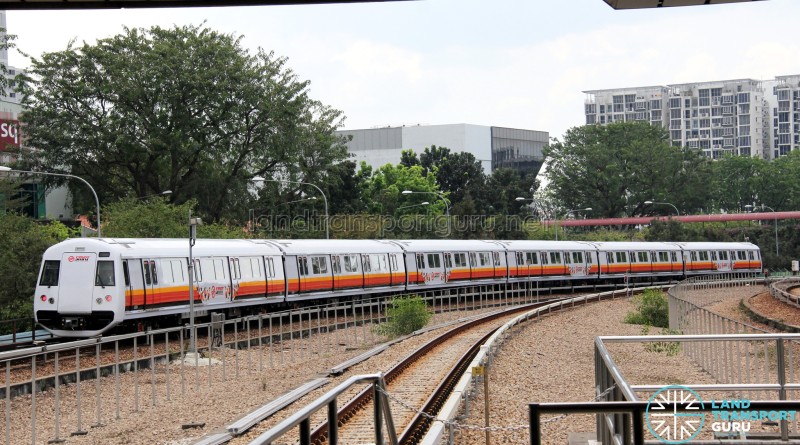Since 28 May 2017, the North South Line (NSL) has been undergoing consecutive days of “testing” of the new signalling system, the Thales SelTrac Communications Based Train Control (CBTC) signalling system.
For a more in-depth write up about the CBTC signalling system itself, check out the article about it here.
Here are 9 things to note about the new signalling system:
1. Signalling “Tests” are actually “Implementations”

Since 28 May 2017, the North South Line has been running on the new CBTC signalling system daily.
Even with the signalling faults (reported on SMRT’s twitter feed and the many more unreported faults) throughout June 2017, the decision to run the new signalling system at all times and not reverting back to the old Westinghouse fixed-block signalling system can be attributed to the following points below.
2. Newest trains only operate on CBTC
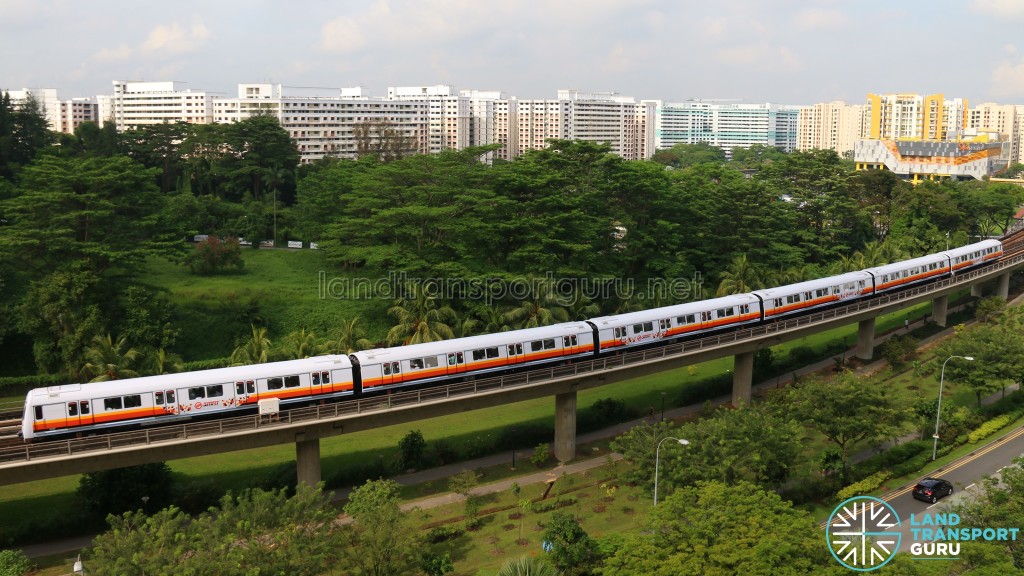
Unlike older trains which are capable of running on both legacy and new signalling systems, the 45 Fifth-Generation trains (Kawasaki Heavy Industries & CSR Qingdao Sifang C151B) can only operate on CBTC. The new signalling system has to be operational before these trains can be deployed. Purchased in August 2012, many of these trains had been delivered but were unable to be deployed on passenger service as the new signalling system had not been activated yet.
Since July 2017, there are over 10 of these trains deployed regularly on the North South Line. As such, there is an increasingly remote possibility that SMRT will revert back to the legacy Westinghouse fixed-block signalling system in the event of a signalling fault, as this would require the withdrawal the C151B trains from revenue service. Hence, the CBTC signalling system is here to stay on the North South Line.
3. Both North South and East West Lines use CBTC

While the North South Line has fully transitioned to CBTC, did you know that a part of the East West Line (EWL) operates on CBTC as well?
The new Tuas West Extension section of the East West Line is only equipped with the new CBTC signalling equipment. All trains have to change from the legacy Westinghouse fixed-block signalling system to CBTC when heading towards Joo Koon or Tuas Link at Pioneer. Similarly, trains switch back from CBTC to the fixed-block signalling system when heading towards Pasir Ris at Pioneer.
The full East West Line implementation of CBTC is expected to take place by 2018.
4. Bottlenecks at Pioneer MRT Station
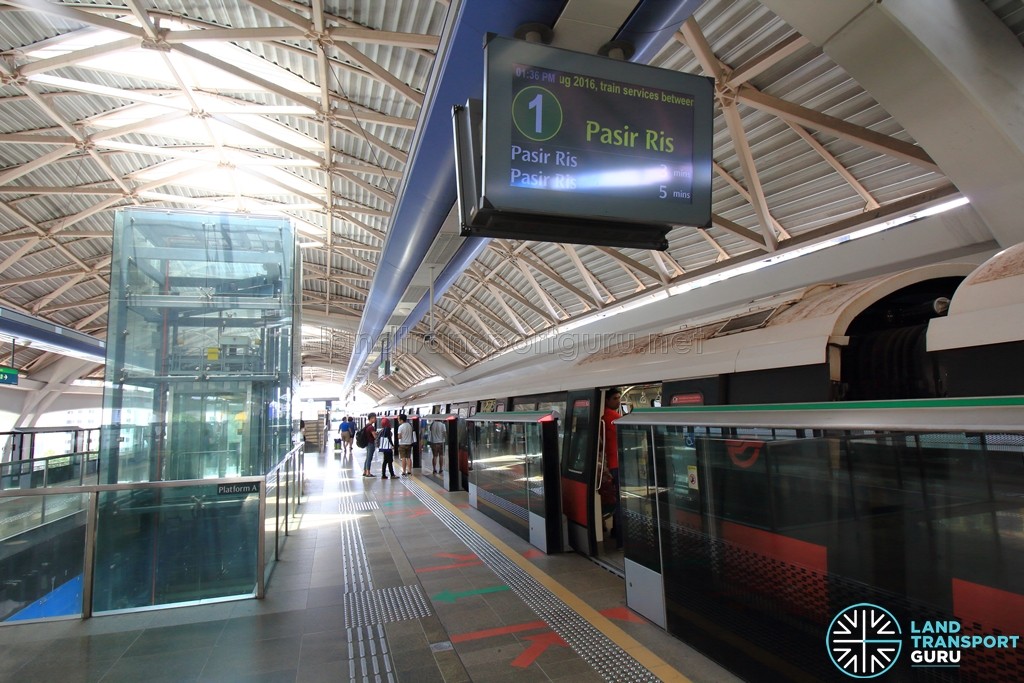
All westbound East West Line trains, terminating at either Joo Koon or Tuas Link, have to switch to the new signalling system at Pioneer MRT Station (Platform B). This is because Joo Koon-bound trains turn around at a cripple siding west of Joo Koon Station, built as part of the Tuas West Extension which is equipped only with the CBTC signalling system.

The signalling switch over is said to take about 2 minutes. However, the actual time required to switch between signalling system varies from as fast as 30 seconds to 5 minutes and much longer should a train or signalling fault occur. With the peak hour train frequency of about 2.5 minutes, delays in the switching of signalling system at Pioneer in either the Eastbound or Westbound direction regularly causes bottlenecks as trains queue up to enter the station.
As a result, commuters may have likely encountered slow-moving trains and “stop go stop go” situations from Lakeside and Pioneer as trains bunch close together. In the Eastbound direction, commuters may face long wait times for trains if there is a delay in switching signalling systems, giving rise to long headways and overcrowded trains.
5. Automated doors may close without warning
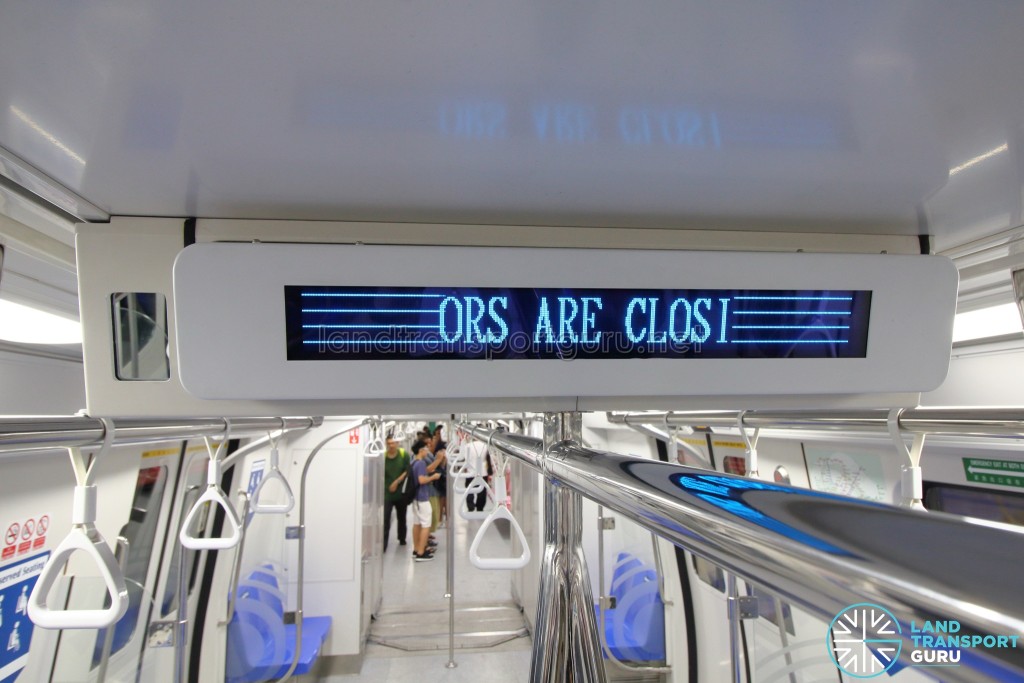
CBTC enables a set amount of time for train doors to open at stations, before closing them automatically.
Doors are commonly reported to close before the “Doors Closing” announcement is played, surprising many commuters who are still trying to board the train, especially at crowded stations such as Raffles Place, Orchard and Jurong East. This is a teething issue with the CBTC implementation that is still commonplace as of July 2017.
In many instances, the train’s Emergency Communication Button was activated due to commuters being struck by closing doors or having items trapped between doors. This led to train delays as station staff had to respond to the situation and manually reset the Emergency Communication Button.
6. Train doors and platform doors may not open/close together

One of the common teething problems faced with the CBTC implementation is the interfacing between the train doors and platform screen doors.
With CBTC, train doors and platform screen doors are designed to open and close in sync, instead of the short lag time between the opening and closing of both the platform screen doors and train doors under the legacy Westinghouse signalling system.
When either the train or platform screen doors fail to open or close, delays will occur as the train is unable to move off the station until the CBTC signalling system confirms that both doors are closed.
7. Trains come at closer intervals
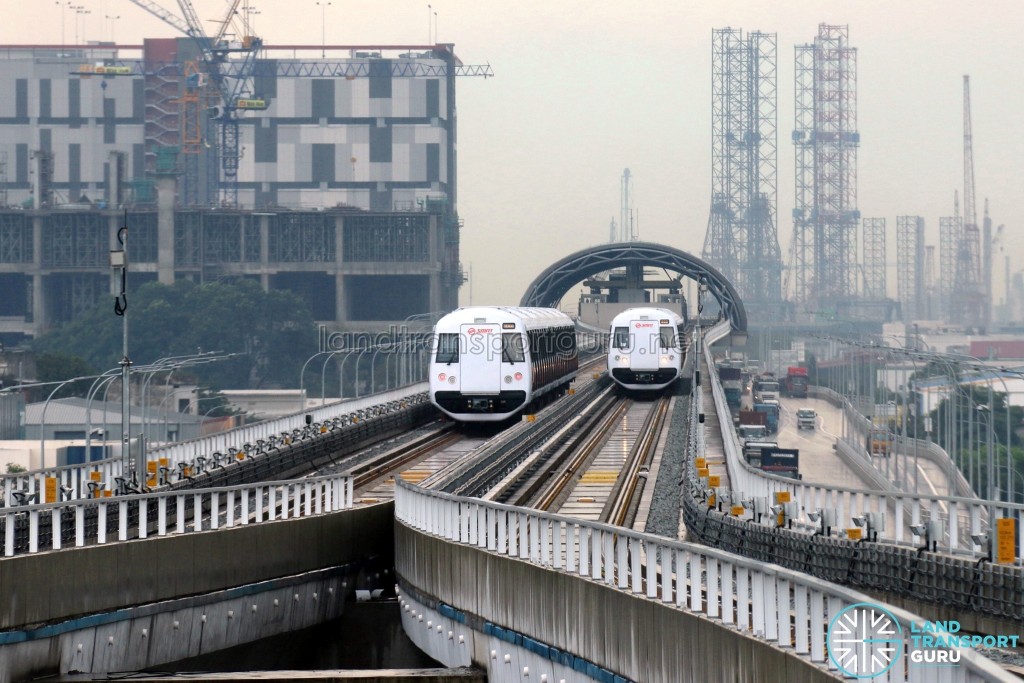
With the new CBTC signalling system, trains are able to run at 100-second intervals, an improvement over the 120-second intervals when running on the legacy Westinghouse fixed-block signalling system. By safely reducing the allowable gap between trains, the new signalling system allows trains to travel much closer to each other should they bunch up. This allows 36 trains to be operated per hour, up from the current 30 trains per hour
During ‘bunching’ scenarios, the rear train is able to enter the station just as the last carriage of the front train is pulling out of the station, which would not be possible under the old signalling system.
8. High frequencies cause bottlenecks at Jurong East
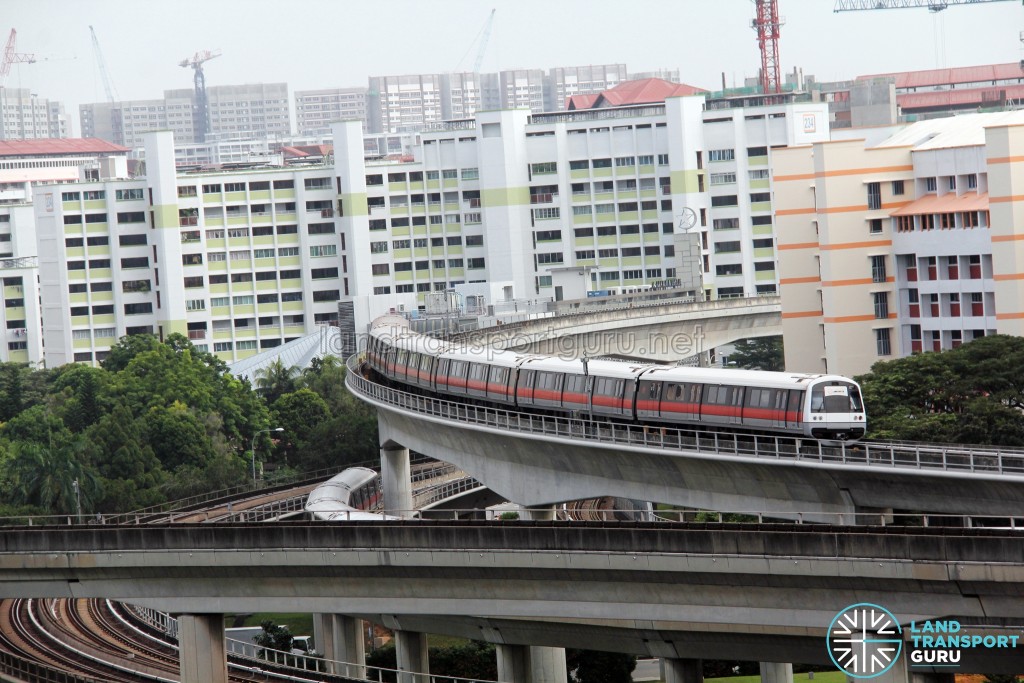
With trains operating at higher frequencies under the CBTC, train bottlenecks regularly occur at Jurong East, one of the terminating stations of the North South Line. As a result, commuters frequently face additional travelling time between Bukit Batok and Jurong East during the peak hours, as trains queue up to enter Jurong East.

The turnaround duration at Jurong East is determined by the CBTC signalling system, as is the automated door closing at every other station. As such, there is a risk that commuters might get struck by closing doors especially while transferring from East West Line to the North South Line. Previously, Train Captains would manually close the doors at an appropriate moment by monitoring the platform situation through CCTV monitors, while also holding the doors for commuters transferring from the East West Line.
9. Delays are not being well disseminated
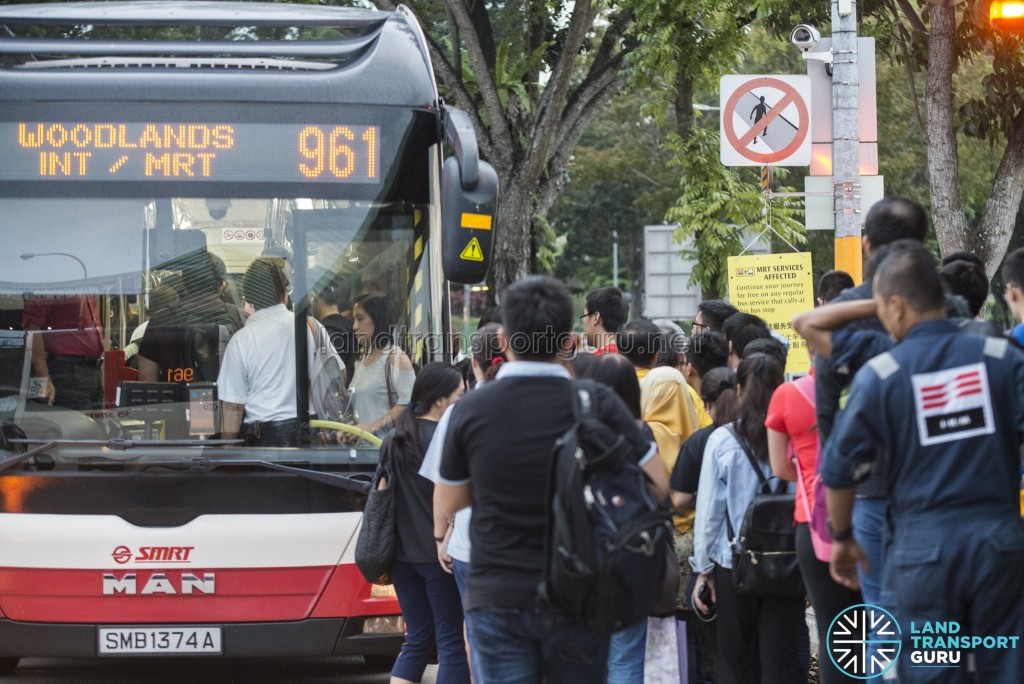
In recent times, commuters are not promptly informed of train service delays as a result of train faults or signalling faults.
The trend appears to point that for 5 – 10 minutes of additional travelling time on the North South or East West Line, SMRT will only do a PA system announcement throughout stations and on board trains, without posting about the delay on their official Twitter account. This has led to many commuters not being able to substantiate being late for work and appointments as there is no proof of the said delay on their social media platforms for verification.
Moreover, delays to sectors of North South Line indirectly affects the rest of the line. For example, a delay in train service between Woodlands and Jurong East during peak hours will also affect the train service between Yishun and Marina South Pier as trains require a longer time to turnaround at Jurong East, affecting train frequencies towards Marina South Pier. The longer headway between trains will also cause many commuters at stations such as Khatib, Ang Mo Kio, Braddell and Toa Payoh to be unable to board the packed Southbound trains.
One example of delays not being reported was on the evening of 10 July 2017, where North South Line trains came to a standstill for about 20 minutes at around 1845hrs. Commuters at Toa Payoh MRT Station also mentioned that there was no train for both bounds for 30 minutes. This delay in train service was not reported at all via the station announcements as well as SMRT’s twitter feed. Commuters were left in the dark on what was going on with the North South Line.
Conclusion

While teething issues during the testing implementation of the CBTC signalling system on the North South Line as well as the Tuas West Extension are bound to occur, proper dissemination of delay information is crucial to all commuters who are affected by the delay, as well as other commuters who may be planning to make a journey on the affected stretch.
When delays occur, alternative travel arrangements must be activated swiftly, such as free bus boarding at affected stations as well as stations leading up to the affected stretch (which are indirectly affected due to train bunching). Bus Captains driving bus services which call at bus stops connected to/near MRT/LRT Stations should also be well aware of the Standard Operating Procedures such as disabling all entry EZ-Link readers instead of verbally telling commuters that the ride is free.
Related Content:
External Links & References:
- —
Back to Train Articles
